The frequently asked question is how much relief can be expected out of the Intaglio printing plate printing on Intaglio rotary machines. Why the Intaglio prints printed on high speed Intaglio machines do not show higher relief compared to the manually made print on a proofing press which show very high percentage of relief than the machine print ?
First of all it is indisputable fact that the Intaglio print on high speed rotary press can not give very high relief in print as desired by us even though the engraved dies may have deeper pits of image to carry more ink . There are limitations. Read the following to understand the reason. The images to be printed by Intaglio are all line work and not halftones. The images, be it be a portrait or numeral, or words or some text – they will all consist of fine lines, dots, wavy lines, thick and thin lines etc. The tonal values i.e light and darker shades in the picture will have the above elements in varying degrees of thicknesses and strength (depth). To fully understand the limitations in Intaglio printing read the following.
(1) Let us assume that we are going to print an intaglio image as shown below which has gradations by way of thicker and thinner lines, wavy lines, dashes, small dots etc to give desired tonal effect in the resultant Intaglio relief image (High and low depths).
(2) First the image will be engraved on to a master Die. The final engraved plate for printing will be prepared after completing certain processes. The final plate will then be prepared for Intaglio printing. The engraved areas on the plate will have corresponding depths to the printed image required to be printed. The plate will produce relief image using stout ink.
(3) Now the question is when printed on a high speed Intaglio machine whether the printed image will have the same amount of relief as per engraved plate corresponding to the original ?
- The real answer is clear ‘NO’.
- The ink from the plate will transfer only to the maximum extent of 85-90% held in the pits to produce the print. This means the relief on the print will not be exactly equal to the engraved depth on plate. Supposing the depth of engraving is 0.070 mm the resultant print relief will be anywhere around 0.050mm to 0.055 mm only by high speed machine printing, and around 0.060 in hand made proofs or semi automatic slow speed machine made proofs.
(4) Why ? Though it is theoretically stated that very high relief is possible, in reality it is not possible to transfer the entire ink from the pits from the plates even if you make very deep engraving on the parts requiring more relief image. There is limitation to the transfer of the ink on to the paper due to several factors like printing speed, position of the paper pulling out the ink from the pits, the angle in which the ink is pulled out, the stoutness of the ink etc. See below two images to understand how the paper lift the ink from the plate .
Generally more than 0.070 mm to 0.085 mm depth engraving is not practically made because of the above reasons and very high relief image can not be obtained on high speed Rotary machines.
(5) Actually how does the transfer of ink take place ?
The Intaglio ink in the pits are stouter only to the extent that it remains inside without falling out. When the paper gets into contact with the back layer of the ink and stick to the ink, due to static pressure (generated by static electricity) the Paper pulls the ink to stay on its surface. During this process different levels of pressure is not applied on deeper and lighter areas of the engraved area, or on the Paper to pick up more ink from the deeper and lighter areas. When the Paper gets into contact with the plate carrying ink, it gets uniform heavy pressure from the impression cylinder to pick up the ink. See the illustration below to understand the implication of ink transfer on to the Paper during impression.
Though the print may appear to lift the entire quantity of ink from pits ( engraved areas) , it is true that a small part of the ink remain in the pit, non transferred.
(6) In view of above reason, the resultant print will not have same amount of relief compared to the engraved portions of the plate. There will be marginal difference between the two- i.e engraved image and resultant print.
(7 ) Secondly one can not feed more ink to fill up the pits and get them transferred on to Paper as it will lead to scumming of the image i.e giving rugged edges of the prints showing ink spots or streaks on non printing areas. Therefore only minimum quantity of ink required to fill the pits are fed in a balancing act.

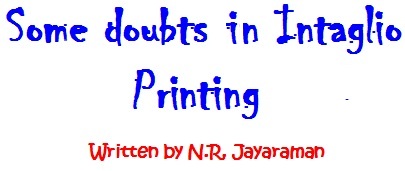

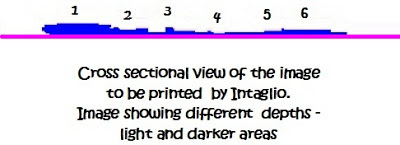
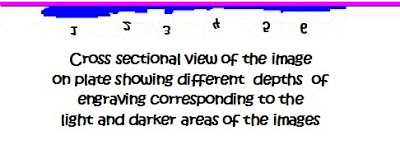
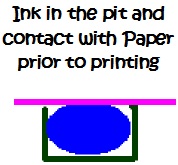
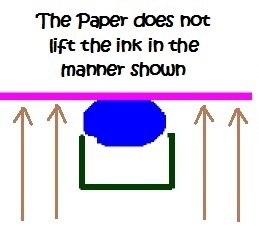
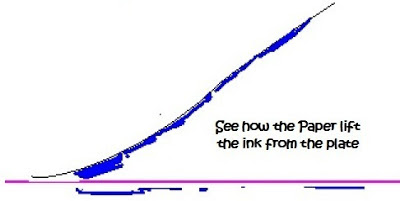
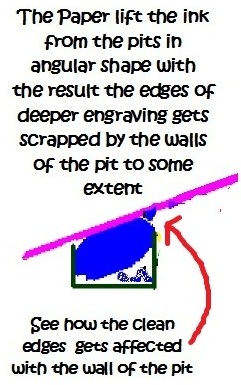
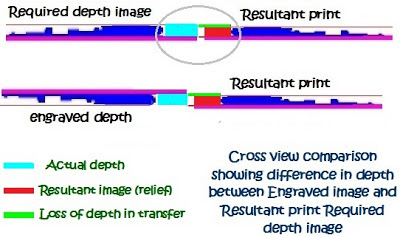
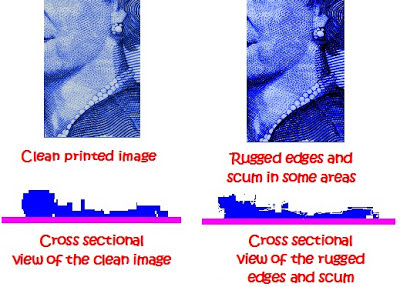













Recent Comments